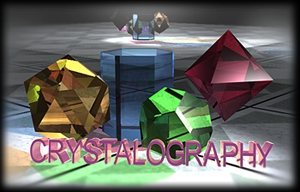
|
|
|||
|
r |
|
|
|
|
|
|
|
Although substantially
more complex than the simple halides, these sulfates,
carbonates and borates are also strongly ionic. They also
share highly ordered crystal structures with excellent
geometry for cleavage along certain lines. Therefore they
too are softer minerals with good cleavage. |
|
Fracture is the resultant break pattern created when a mineral breaks but does not cleave. Glass although not a mineral does fracture when struck, and the pattern is known as uneven or chonchoidal (breaking in shell-like or scalloped edges.) Quartz and glass (SiO2) break in a chonchoidal fashion (as seen to the right), as they has no cleavage. A mineral may fracture as well as cleave, but the fracture pattern will be formed only when it breaks away from its cleavage plane(s). Orthoclase (K Al Si3O8) has both, good cleavage in two directions, but also shows a fracture pattern in the other. Toughness is the
ability of a mineral to withstand a sharp blow without
fracturing, cleaving or being powdered in the process. Again
Diamond is the hardest mineral and cannot be scratched by
anything else. If it is hit with a hammer it will turn to
dust. It is not tough, it is hard. Jade ( mineral:Nephrite)
is one of he toughest minerals, it only has a hardness
between 5 and 6, but it can be struck with a hammer and will
only deform. It tends to have a fibrous or bladed
interlocking structure that makes it tough. The Chinese used
dark, non-gem colored jade to make anvils for black-smithing
due to its toughness. |
|
|
|
|
|
ral with very good c |
|
ral with very good covalent bonding, |
|
The structure of quartz is more like a three dimensional mesh with no obvious planes of weakness. The structure is evenly bonded in all directions and through any angle. Hence there are no obvious cleavage planes. The bonding is more covalent and far less ionic, so it is not affected by water. The surface is thus harder and it can be fractured but not cleaved. There are several different structures for quartz depending on the temperature and pressure under which it was created. Two of the low pressure forms are shown above, and notice the only difference is a slight rotation and orientation of the tetrahedrons with respenct to one another. |